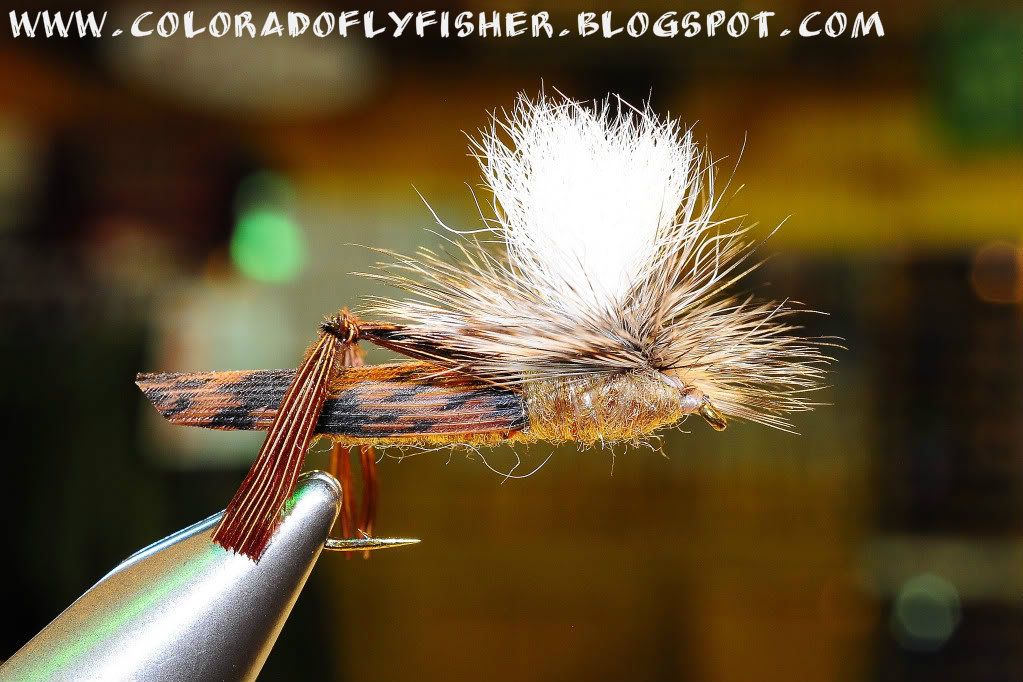 |
| #9 The Parachute Hopper |
The top ten flies on anyone's list should always include a hopper. The Parachute Hopper floats great, and to this day still has one of the more realistic profiles of a natural hopper when looking at it from underneath like a hungry panfish would. It does start to carry water and sink a little after catching a few fish but that problem is easily solved with floatant. The wing on this hopper also gets beat up pretty easy as well but again that's a small price to pay for a near perfect representation of a grasshopper.
The best time of the year to fish hoppers is in the late summer starting around the end of July and lasting through the middle of October on some years. When real hoppers hit the water they sit low in the surface film because they are heavy and clumsy, and that is why I like the parachute style because this hopper sits low. Just like the Elk Hair Caddis this is a great small stream fly. When fishing hoppers throw delicate presentations out the door. Deliberately cast this fly so it hits the water hard and makes a lot of noise. Fish it tight up against the bank and close to cover.
Many anglers have replaced strike indicators when nymph fishing with hopper patterns by attaching a section of tippet (leader material) to the bend of the hook on the hopper, and at the other end of the tippet attaching a heavy nymph. This set up is called the hopper/dropper system and is extremely effective because you are covering more than one base with your flies (dry flies, and subsurface nymphs).
Check out number ten on the list here...
For rates and to check on my availability for guided trips contact me at jonkleisflyfishing@yahoo.com
If you like my blog and want to see more please subscribe by clicking the join this site button on the side of my page.
Thanks and tight lines!

No comments:
Post a Comment